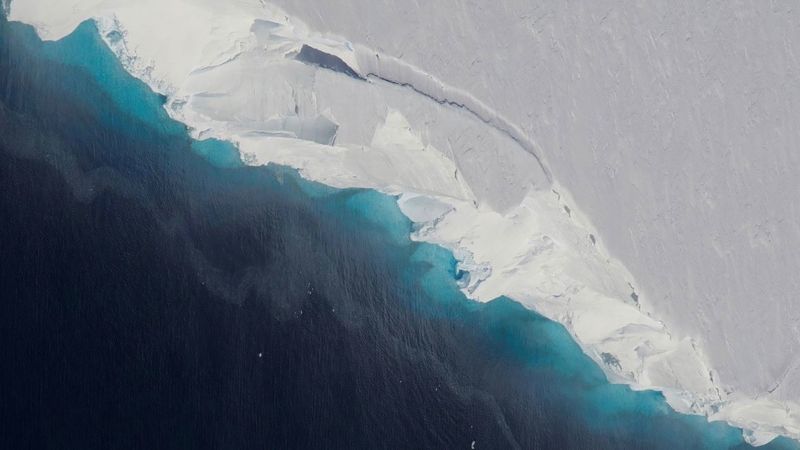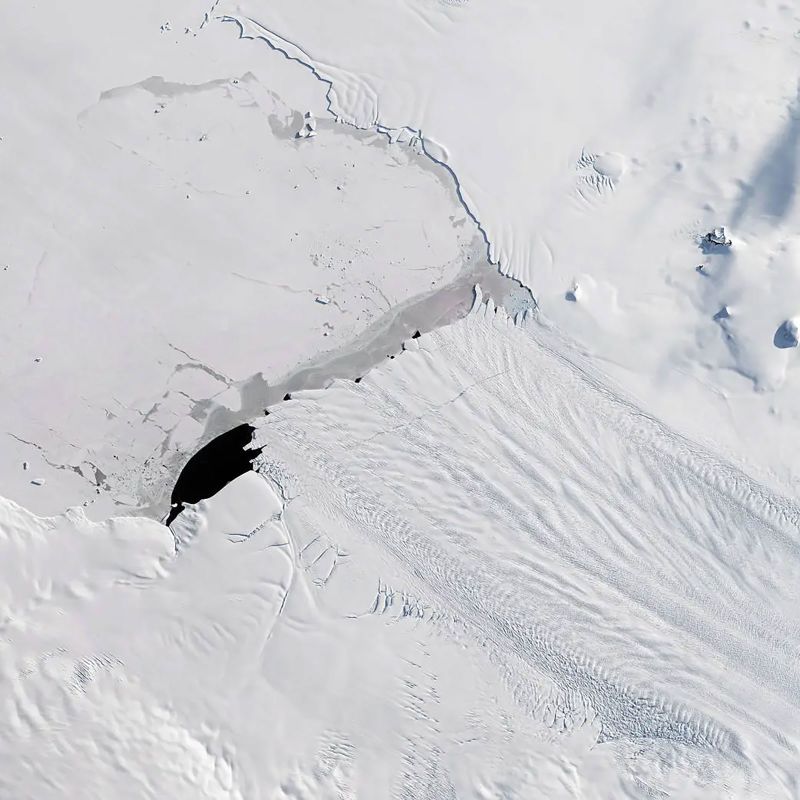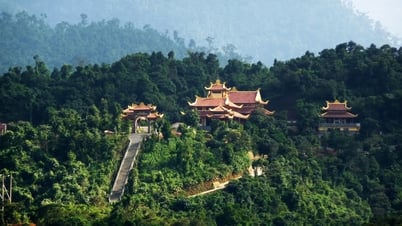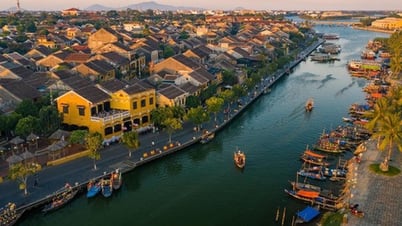Scientists have found that the Thwaites Glacier in West Antarctica began to melt significantly in the 1940s, possibly due to a strong El Niño event, a natural climate fluctuation that tends to have a warming effect, according to a study published Monday in the journal Proceedings of the National Academy of Sciences.

Thwaites Glacier in Antarctica. Photo: NASA
The Thwaites Glacier is the world's largest glacier and is roughly the size of the US state of Florida. Scientists determined when the glacier began to melt by analyzing marine sediment cores extracted from the ocean floor.
The study provides alarming insight into the future of glacier melting, suggesting that glaciers are unlikely to recover, which could reflect the increasing impact of human-caused global warming.
The Thwaites glacier’s movements would have major global implications. The glacier contributes 4% to sea level rise by shedding billions of tonnes of ice into the ocean each year. A complete collapse of Thwaites could raise sea levels by more than 60cm.
Thwaites also plays a key role in stabilizing the West Antarctic Ice Sheet, acting like a cork holding the vast ice sheet back. The collapse of Thwaites would undermine the stability of the ice sheet, which holds enough water to raise sea levels by at least 3 metres, causing catastrophic flooding around the globe.
The study's findings are consistent with previous research on the neighboring Pine Island Glacier, one of Antarctica's largest ice streams, which scientists also found began retreating rapidly in the 1940s.
What's happening to the Thwaites glacier is part of a larger climate change scenario, said Julia Wellner, an associate professor of geology at the University of Houston and one of the study's authors.
“If both glaciers are retreating at the same time, that’s evidence that they’re actually being forced by something,” Wellner said.

A 2017 photo shows a newly formed iceberg from the Pine Island Glacier, one of the main gateways where ice from the West Antarctic Ice Sheet flows into the ocean. Photo: NASA
The team believes Thwaites' retreat was due to an extreme El Niño event that coincided with a period of glacial melt. "It's like if you get kicked while you're sick, it hurts a lot more," Wellner says.
The findings are alarming because they show that once major changes are triggered, they are very difficult to stop, said James Smith, a marine geologist at the British Antarctic Survey and co-author of the study.
“Once ice sheet retreat starts, it can continue for decades,” he said, adding that these glaciers show no signs of recovering, reflecting the growing impact of human-caused climate change.
Agreeing, physics professor Martin Truffer at the University of Alaska Fairbanks said that based on research, it can be seen that if a glacier is in a sensitive state, "a single event can push it into a state of retreat and make it difficult to recover".
“Humans are changing the climate and this study shows that small, continuous changes in climate can lead to stepwise changes in glacier behavior,” said Truffer, who was not involved in the study.
Antarctica is sometimes called the "sleeping giant" because scientists are still trying to understand how vulnerable the icy, isolated continent might be as humans warm the atmosphere and oceans.
Hoai Phuong (according to CNN)
Source





![[Video] Global Stroke Alliance Conference, Elevating Regional Medicine](https://vphoto.vietnam.vn/thumb/1200x675/vietnam/resource/IMAGE/2025/7/24/c7b069d0909447c2a739de55cf4accd8)





















![[Photo] Signing of cooperation between ministries, branches and localities of Vietnam and Senegal](https://vphoto.vietnam.vn/thumb/1200x675/vietnam/resource/IMAGE/2025/7/24/6147c654b0ae4f2793188e982e272651)











































































Comment (0)